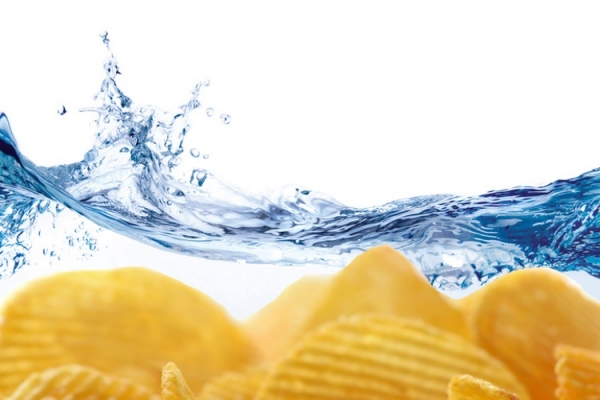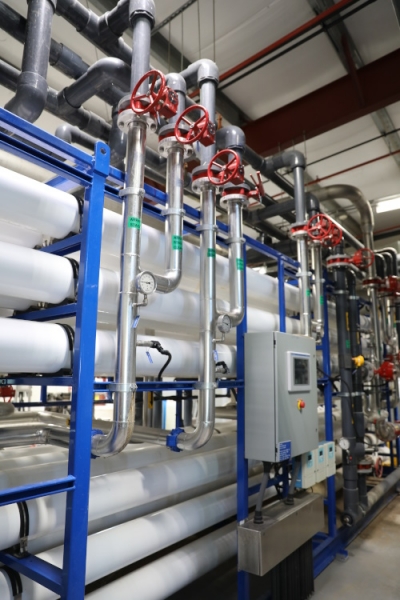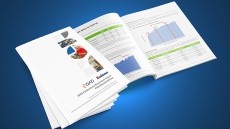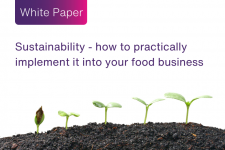How PepsiCo is sequestering the water from its potato chips to combat the water crisis, and other interesting innovations

PepsiCo recently announced it has surpassed its 2025 goal to improve operational water-use efficiency in high-water risk areas by 25% off a 2015 baseline, a full two years ahead of schedule, as part of its aim to become net water positive by 2030.
That is an impressive feat and not achieved overnight. In reality, it involved an extensive crew of passionate people, many outstanding ideas, several efficacious partnerships and time to review failures and learnings, among other things, to raise the bar and encourage others to join in its journey.
We chat to David Grant, senior director of Global Climate and Water Solutions for PepsiCo about this achievement, the company’s innovative approaches and holistic approach to corporate water stewardship and positive impact in high-water risk areas.
How do you see climate change impacting businesses in the next decade?
Water is going to be one of those key drivers that business is going to feel as a result of the impacts of climate change. At the moment, the state of play is around 50% of the global population experiences severe water stress. This is expected to go up to about 60% of the global population by 2050,
What role do you believe businesses should be playing in addressing water scarcity, both locally within their markets and globally?
Water plays an integral part in almost every company. PepsiCo was one of the first companies of its size to recognise water as a basic human right and an integral to the way we approach business.
Companies need to take it from a value chain approach, which is what we do. If you look at the way our goals are structured, it’s very much about the full transformation from agriculture right through to manufacturing.
Businesses have a dual role. The one is on demand: how do we reduce our alliance on water, particularly in regions where water is scarce? At PepsiCo, we are doing our best to make the most of every single drop that we bring onto site.
Then we've got the role to address the supply of water, which starts talking about what we do at watershed level. Our growers, our communities, all rely on the same water sources, so companies have a role in terms of how to protect those sensitive sources to start ensuring a sustainability of supply, particularly with the impacts of climate change and how it's going to get progressively worse.
From a PepsiCo point of view, we’ve activated around 35 projects – across the globe – working with a range of partners to implement programs that will support healthy watersheds.
How do you see the water landscape evolving over the next couple of decades?
I think companies as a whole are getting more advanced in their thinking around what to do around water and that’s certainly reflected in PepsiCo’s goals. In a food context, we’ve set a really ambitious goal of reducing our water efficiency to 0.4 litres for every kilogram of product that we produce.
In order to do that, we invested quite heavily in technology, making sure we make the most use of whatever we bring on site with a strong focus on the recovery and reuse of water within our facilities.
An interesting idea came out of India, where our R&D teams were looking at our potential to manifesting and process the water in potatoes. Potatoes are 80% water and when we fry them, that water evaporates as steam and is lost to the atmosphere.
So, they’ve designed some technologies to capture that condensate and recycle that back into the process, clean it up and then reuse it. This has the ability to save significant amounts of water.
Another interesting technology that we’ve implemented is something called membrane bioreactors. Essentially, what that does is take processed wastewater and treating it to potable water standards so it can be reused. Again, it’s driving down the water consumption of those sites by up to 70%.
The membrane bioreactor tech is currently in 21 sites across a range of countries, including India, Mexico and North America. The potato tech is being rolled out across multiple countries as well.
I think this is part of the success in terms of how we’ve met our 2025 goal two years early – this ability to first identify best practises and then shift it to other parts of the company.
We have a strong focus on knowledge-sharing within the company and have different forums – a community of practice – where all the water experts get together on a monthly basis and we share best practises, what worked, what didn’t work.
We also have an annual global water summit: very much a kind of show and tell in terms of both current practises and what’s in development.
What are the cost implications?
The advanced technologies do carry a price tag, as with an technology, but we use something called a true cost of water toolkit.
So typically, we look at water coming into a facility and calculate what we are paying – dollar per gallon.
But when that water comes onto site, we treat it – it goes through filtration, etc, and there’s costs associated with that. cetera, et cetera. Then we heat and cool that and look at the costs involved with that. And then at the tail end, we treat it again before reusing it in other facilities or discharging it into a public system.
By calculating all these costs, we have a true figure. It’s not just the raw water charge that you’re paying for, but all the other costs. There’s costs associated with every single part of that exchange.
So by reducing usage, you’re saving on these costs as well. It’s really a more holistic way of looking at the cost of water in terms of justifying technology spend.
Are you prepared to share some of your knowledge with others in the business sector?
This is a 100% shared journey. We need everyone working in unison if we’re going to tackle this challenge. It is of such a scale that PepsiCo alone would never solve it. We could be the most water efficient company in the world, but that’s not going to change water stress.
I think one of the keys of PepsiCo’s success in achieving our goals is the people on board with us. If your people are important to what you’re trying to do, it doesn't matter what goal you set, it’s going to happen.
We hold a course – basically a Water 1010 – that’s open to every employee: Why should I care about water to where water comes from, water stress and how companies work with it.
Because we’ve had so much success with this course internally, we decided to make it public. So now it’s sitting on an open source platform called Coursera. It’s one of the ways we’re trying to share that knowledge and get everyone on that journey with us.
There’s also the work that we do at a watershed level in partnership with NGO like the Nature Conservancy and WWF. These invariably are multi-party partnerships, so we actively look for other companies that are operating in the same watershed to join us on this journey.
PepsiCo is a also member of the Beverage Industry Environmental Roundtable, a group of beverage companies working to reduce consumption, mitigate impact and ensure sustainable continuity and future of the global industry.
What do you see as the biggest opportunities for those businesses who can contribute positively to water conservation efforts?
Firstly, at a very basic level you are reducing the risk to your business. Also working on water conservation and ensuring sustainability of supply to your business also benefits the surrounding communities.
I go back to what we’re doing, for example, with the Nature Conservancy. We’ve got an interesting partnership going in Cape Town, South Africa, called the Greater Cape Town Water Fund that was established more or less around the time when Cape Town was, in theory, going to run out of water.
What the partnership does is look at invasive species – one of the major contributors to water stress in Cape Town – so pine trees, etc, in catchments that suck up an enormous amount of water.
Through the partnership, the Nature Conservancy is removing those invasive species and rehabilitating the area with indigenous vegetation, so things like fynbos, which is really important there. It’s got some really interesting knock on effects. Apart from the fact that it’s supporting increased water supplies into their catchment, it’s providing employment opportunities to local disadvantaged communities, especially women.
We’ve also seen some interesting results to local biodiversity. They’re seeing, for example, leopard and porcupine coming back into the area. Some local antelope species, too.
Water's so intricately tied into everything: the biodiversity benefits, the socio economic impact benefits from – whether that’s employment or making sure local communities have access to clean and fresh water – and the carbon benefits. When you rehabilitate these areas, you’re getting the carbon sequestration opportunities there as well.
Listen to the podcast to find out a lot more about PepsiCo’s water-saving initiatives and how you can join it on the journey.















